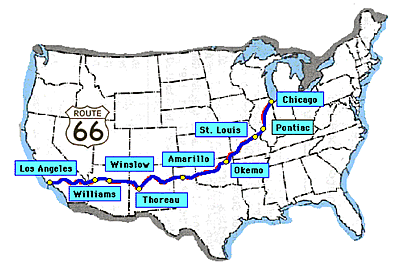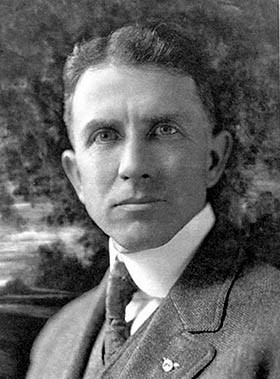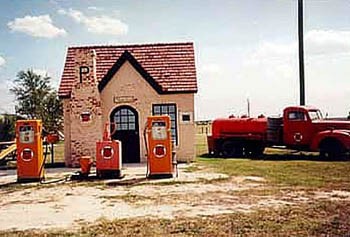Back in Time
Route "66" The Mother Road
By Rickie Longfellow
Get your kicks on Route 66! At one time or another most of us have heard this 1946 song written by Bobby Troup and sung by the unforgettable Nat King Cole. But many of us also remember the theme song composed by Nelson Riddle that accompanied a popular 1960s television series entitled Route 66, starring Martin Milner, George Maharis and Glenn Corbett. The series followed three young men driving around America working odd jobs and helping folks in need. The series, which ran from 1960 to 1964 and continued in syndicated reruns for decades, helped immortalize this road.
 Mapping it! Route 66 cities. |
In the early 1900s, Cyrus Avery of Tulsa, Oklahoma, a realtor and owner of a coal company, began acquiring oil leases. With the need to reach the barren lands around him and the need for a roadway from the Midwest to the western lands connecting cities along the way, the road became a reality. With John Woodruff of Springfield, Missouri, Avery promoted the idea of bringing prosperity to Tulsa and other points west. Unlike the straight Lincoln Highway, Route 66 did not follow a linear course. Its diagonal course linked hundreds of rural communities from Chicago to Kansas and on to Los Angeles, enabling farmers to transport grain and produce. By the 1930s the trucking industry was using Route 66. The truckers enjoyed the easier drive across the prairie lands and milder climates than the northern routes offered. Avery is remembered as "The Father of Route 66."
 Cyrus Stevens Avery |
To further the popularity of Route 66, John Steinbeck proclaimed Route 66 the Mother Road in his 1939 book The Grapes of Wrath. Like Route 40 and the National Road, Route 66 has shared the title The Main Street of America. With all this attention plus the popularity of the automobile, the filling stations were built with clear association to particular petroleum companies. Restaurants, souvenir shops and auto camps sprung up. Landmarks of all kinds were built and the road was at its peak of popularity. Post- Depression and post-world War II families, equipped with jobs, money and an automobile, planned cross-country road trips via Route 66 to see all the sites.
In 1956, the Federal Aid Highway Act was passed, which provided a financial umbrella to underwrite the national interstate and defense highway system. By 1970 nearly all of the original Route 66 was replaced by a modern four-lane highway and the popularity of the old road began to decline.
Americans are a nostalgic lot. Route 66 celebrates its 77th birthday this year and has undergone revitalization in many areas from Chicago to Los Angeles. Check out the Web site at: (http://xroads.virginia.edu/~UG02/carney/kicks.html)
The National Historic Route 66 Federation was founded in Tujunga, California, to preserve the California portion of Route 66. Email: national66@national66.org for information or write: National Historic Route 66 Federation, P.O. Box 423, Dept. S, Tujunga, CA 91043-0423.
 Phillips 66 "Filling Station." See how it got its name: http://www.phillips66.com/about/why66.html |

